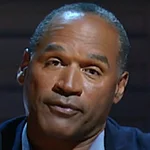|
|
Aside from the title of a spaghetti-Western, “The Good, the Bad and the Ugly” also aptly applies to how media relations have changed over the last few decades, which I’ve witnessed firsthand, first as a journalist and editor and later, as a professional in the PR business.
Of course, the biggest changes have been the result of technology. But below are several other reasons for those changes as well.
The Good: Newcomers to our business might be surprised to learn that for many years, dailies and wire services would run a story and omit the brand name of a product because, they said, “it’s too commercial.” Today, brand mentions are the norm.
While at Burson-Marsteller I found a way around the commercial block. Every story idea I presented had loads of stats about product sales, costs of promotions, etc. Without identifying which brand the stats referred to made for an incomplete story.
The Bad: Before newsrooms used computers as their basic tools, reporters were free to meet with PR people to discuss story ideas. Even when reporters were busy, we were always invited to meet in the newsroom to pitch ideas. The caveat was that pitches had to make sense, meaning they contained hard news or feature elements that made sense to journalists. Pitching fluff would end the welcome mat.
Making matters worse was the advent of the 24/7 news cycle. Many reporters became chained to their desks, often ending the cordial one-on-one relationship between reporters and PR people. Because of time constraints brought on by the 24/7 news cycle some reporters did not have the time or freedom for in-person, in-depth interviews. A short phone conversation, followed by email discussions, was often the result.
Laptop computers also played a significant role in diminishing the personal relationships. Many reporters never go to the office these days. They file their stories or columns from wherever.
The Ugly: Prior to becoming a freelancer, I was a Senior VP/Senior Counselor at Burson-Marsteller and was responsible for restructuring, managing and playing key roles in some of the most significant national and international sports and non-sports programs, as well as traveling internationally with high-ranking government officials as a media advisor. And before joining the PR business I reported for several years for some of New York City’s major dailies. Thus, I can confidently write about the ugly from personal experience on both sides of the aisle.
Here’s how some matters have made a change for the worse.
Media contact: Contacting a print journalist used to be easy, even if you didn’t have a direct phone number. Just pick up the telephone and tell the operator to connect you to a specific reporter or an editor or reporter that covers the salt and pepper industry. No problem. At a TV station, all you had to do was ask to be connected to a producer of a certain show.
Then things changed. Many news outlets wouldn’t connect you with an individual unless you gave them a specific name. Even worse, some news outlets did away with a live person answering the phone and required you to punch in the name via your telephone keyboard. (It took a while, but I finally figured out how to beat the “no name, no connect” system without spending a bundle on contact books, which I’ll gladly share with anyone who hires me for project work.)
Manners: I’ve always been treated respectively by experienced reporters and editors. Not so by novice reporters. Two examples:
At an international event, I approached a young reporter, introduced myself and was immediately told, “I don’t work with PR people” and he walked away.
At another event, a reporter didn’t even let me finish introducing myself before saying, “Got to go.” What I was offering was good, solid stories that subsequently were done by other reporters who listened to what I was pitching. (Lesson to be remembered: The more experienced the reporter the better they treat PR people. And staffers at the major news organizations are rarely rude if you know their beat and pitch solid story ideas.)
The PR/journalist relationship has changed dramatically over the years. As a journalist, I always let PR people finish their pitch, even if I knew it didn’t have story value. When I jumped the fence to the PR side, the great majority of journalists would let you finish pitching before saying, “good story” or “no story.” (I guess good manners aren’t part of the communications schools’ texts.)
Finally, while there have been many changes in the PR/journalist relationship over the years, some things remain the same:
The best way to create a good working relationship is to pitch only solid stories to the proper beat reporter or editor. Pitch “in their ballpark” stories often enough and you will always get a hearing.
Pitch junk and your calls, emails or other pitching methods will not be forgotten and neither will you, and not in a good way.
***
Arthur Solomon was a senior VP/senior counselor at Burson-Marsteller, and was responsible for restructuring, managing and playing key roles in some of the most significant national and international sports and non-sports programs. He also traveled internationally as a media adviser to high-ranking government officials. He now is a frequent contributor to public relations publications, consults on public relations projects and is on the Seoul Peace Prize nominating committee. He can be reached at [email protected].

 Arthur Solomon
Arthur Solomon
 The techniques deployed by OJ Simpson's defense team in the "trial of the century" served as a harbinger for those used by Donald Trump... People worry about the politicization of medical science just as much as they fret about another pandemic, according to Edelman Trust Barometer... Book bans aren't restricted to red states as deep blue Illinois, Connecticut and Maryland challenged at least 100 titles in 2023.
The techniques deployed by OJ Simpson's defense team in the "trial of the century" served as a harbinger for those used by Donald Trump... People worry about the politicization of medical science just as much as they fret about another pandemic, according to Edelman Trust Barometer... Book bans aren't restricted to red states as deep blue Illinois, Connecticut and Maryland challenged at least 100 titles in 2023. The NBA, which promotes legalized gambling 24/7, seems more than hypocritical for banning player for placing bets... Diocese of Brooklyn promises to issue press release the next time one of its priests is charged with sexual abuse... Truth Social aspires to be one of Donald Trump's iconic American brands, just like Trump University or Trump Steaks or Trump Ice Cubes.
The NBA, which promotes legalized gambling 24/7, seems more than hypocritical for banning player for placing bets... Diocese of Brooklyn promises to issue press release the next time one of its priests is charged with sexual abuse... Truth Social aspires to be one of Donald Trump's iconic American brands, just like Trump University or Trump Steaks or Trump Ice Cubes. Publicis Groupe CEO Arthur Sadoun puts competition on notice... Macy's throws in the towel as it appoints two directors nominated by its unwanted suitor... The Profile in Wimpery Award goes to the Ford Presidential Foundation for stiffing American hero and former Wyoming Congresswoman Liz Cheney.
Publicis Groupe CEO Arthur Sadoun puts competition on notice... Macy's throws in the towel as it appoints two directors nominated by its unwanted suitor... The Profile in Wimpery Award goes to the Ford Presidential Foundation for stiffing American hero and former Wyoming Congresswoman Liz Cheney. JPMorgan Chase chief Jamie Dimon's "letter to shareholders" is a must-read for PR people and others interested in fixing America and living up to its potential... Get ready for the PPE shortage when the next pandemic hits... Nixing Netanyahu. Gaza carnage turns US opinion against Israel's prime minister.
JPMorgan Chase chief Jamie Dimon's "letter to shareholders" is a must-read for PR people and others interested in fixing America and living up to its potential... Get ready for the PPE shortage when the next pandemic hits... Nixing Netanyahu. Gaza carnage turns US opinion against Israel's prime minister. Trump Media & Technology Group sees Elon Musk's X as an option for those who want the free expression promised by Truth Social but without Donald Trump, owner of 57.3 percent of TMTG... Chalk one up for "anti-woke warrior" governor Greg Abbott as University of Texas lays off 60 DEI-related staffers... Five percent of Americans see the US as its own worst enemy, according to Gallup.
Trump Media & Technology Group sees Elon Musk's X as an option for those who want the free expression promised by Truth Social but without Donald Trump, owner of 57.3 percent of TMTG... Chalk one up for "anti-woke warrior" governor Greg Abbott as University of Texas lays off 60 DEI-related staffers... Five percent of Americans see the US as its own worst enemy, according to Gallup.


 Have a comment? Send it to
Have a comment? Send it to 
No comments have been submitted for this story yet.